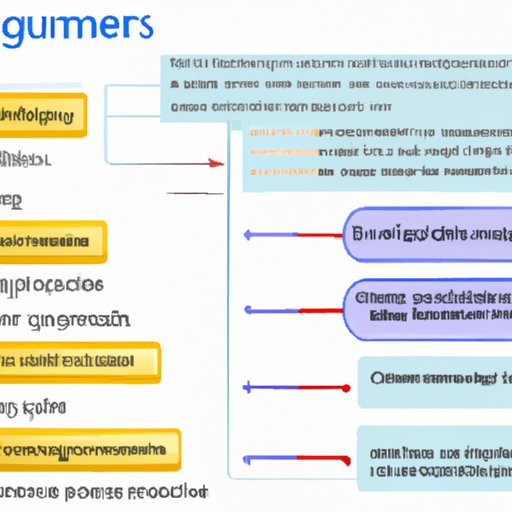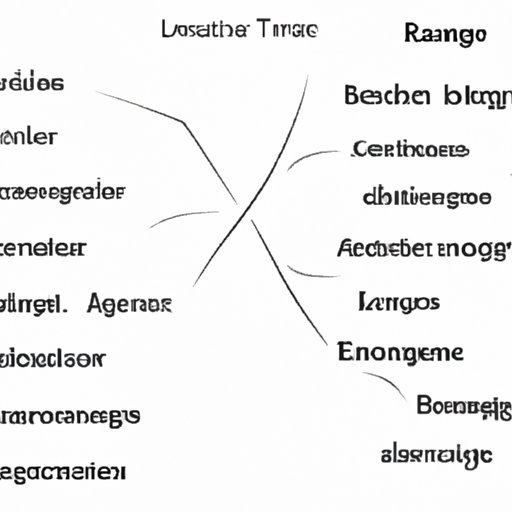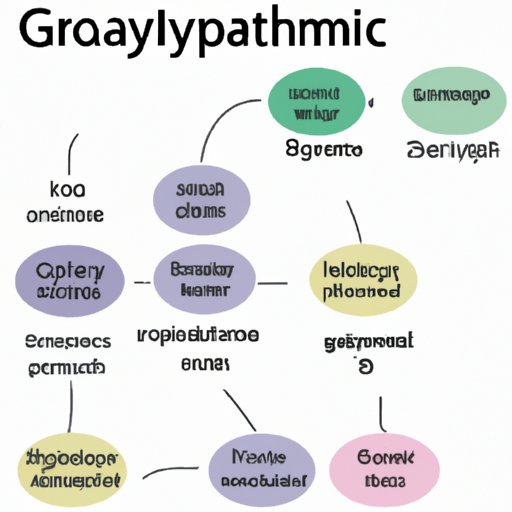Introduction
Language is a complex system comprised of many rules that govern how we communicate with one another. These rules are often referred to as “grammar” and they have a profound impact on how we write and communicate. In this article, we will explore how the rules of language affect writing and communication by examining the role of grammar, syntax, morphology, semantics, phonetics, and pragmatics.

Analyzing the Impact of Grammar Rules on Written Communication
Grammar is defined as the set of structural rules governing the composition of clauses, phrases, and words in any given natural language. Grammar rules dictate how words should be used, arranged, and combined to convey meaning. Examples of grammar rules include subject-verb agreement, sentence structure, punctuation, spelling, and capitalization.
Grammar rules have a significant influence on written communication. For example, incorrect subject-verb agreement can lead to confusion or misinterpretation. Similarly, improper sentence structure can make it difficult for readers to understand the intended message or idea. Punctuation helps to clarify meaning and add emphasis. Poor spelling and incorrect capitalization can make a piece of writing appear sloppy or unprofessional.
Exploring the Role of Syntax in Writing
Syntax is the set of rules that govern how words are combined to form phrases and sentences. Syntax rules dictate the order in which words should appear in a sentence, as well as the types of words that can be used together. Examples of syntax rules include word order, verb tense, and the use of conjunctions.
Syntax has a major impact on how we write and communicate. For instance, incorrect word order can lead to misunderstandings or confusion. Additionally, using the wrong verb tense can change the meaning of a sentence. Similarly, improper use of conjunctions can change the sense of a sentence or phrase.

Examining How Morphology Impacts Language and Writing
Morphology is the study of the internal structure of words and how they can be modified to create new words and meanings. Morphology rules dictate the formation of words from base forms and how certain suffixes or prefixes can be added to modify the meaning. Examples of morphological rules include adjectives and adverbs, nouns and verbs, and plurals and singulars.
Morphology has an important role in writing and communication. For instance, incorrect use of adjectives and adverbs can change the meaning of a sentence. Similarly, incorrect use of nouns and verbs can cause misunderstandings. Lastly, using the wrong plural or singular form of a word can also lead to confusion.

Discussing the Influence of Semantics on Writing
Semantics is the study of the meaning of words, phrases, and sentences. Semantic rules dictate how the meaning of a word or phrase changes depending on its context. Examples of semantic rules include connotation and denotation, synonyms and antonyms, and figurative language.
Semantic rules have a strong influence on written communication. For instance, connotation and denotation can alter the meaning of a word or phrase. Similarly, the use of synonyms and antonyms can add depth and clarity to a piece of writing. Lastly, the use of figurative language can add emotion and imagery to a text.
Investigating the Relationship Between Phonetics and Written Expression
Phonetics is the study of the sounds of speech. Phonetic rules dictate how sounds are produced and how they interact with one another. Examples of phonetic rules include intonation, stress, and rhythm.
Phonetic rules have a significant influence on written communication. For example, incorrect intonation can change the meaning of a sentence. Similarly, incorrect stress or rhythm can make a piece of writing hard to understand or follow. Phonetic rules also play an important role in determining the pronunciation of words.
Assessing the Role of Pragmatics in Language Use
Pragmatics is the study of how language is used in various contexts. Pragmatic rules dictate how language should be used in different situations. Examples of pragmatic rules include politeness, tone, and register.
Pragmatic rules have a major influence on written communication. For instance, inappropriate politeness can lead to misunderstandings or offense. Similarly, incorrect tone or register can make a piece of writing appear unprofessional or insensitive. Pragmatic rules also help to determine the appropriateness of language in different contexts.

Comparing Different Language Structures and Their Effects on Writing
Different languages have distinct structures and rules that govern their use. Examples of different language structures include phonemic systems, syllable structures, and morphosyntactic rules. Each of these language structures has a unique effect on writing and communication.
For instance, phonemic systems influence the pronunciation of words. Syllable structures affect the rhythm and flow of a piece of writing. Morphosyntactic rules dictate the formation of words and phrases. By understanding how different language structures affect written communication, writers can better craft their messages to suit their audience.
Conclusion
In conclusion, the rules of language have a profound effect on how we write and communicate. Grammar, syntax, morphology, semantics, phonetics, and pragmatics all play an important role in shaping our written expression. Understanding how these rules influence writing can help writers craft more effective messages and improve their communication skills.
This article has explored how the rules of language affect writing and communication. We have examined the role of grammar, syntax, morphology, semantics, phonetics, and pragmatics, and looked at how different language structures affect written expression. We have also offered recommendations for further study.
(Note: Is this article not meeting your expectations? Do you have knowledge or insights to share? Unlock new opportunities and expand your reach by joining our authors team. Click Registration to join us and share your expertise with our readers.)
